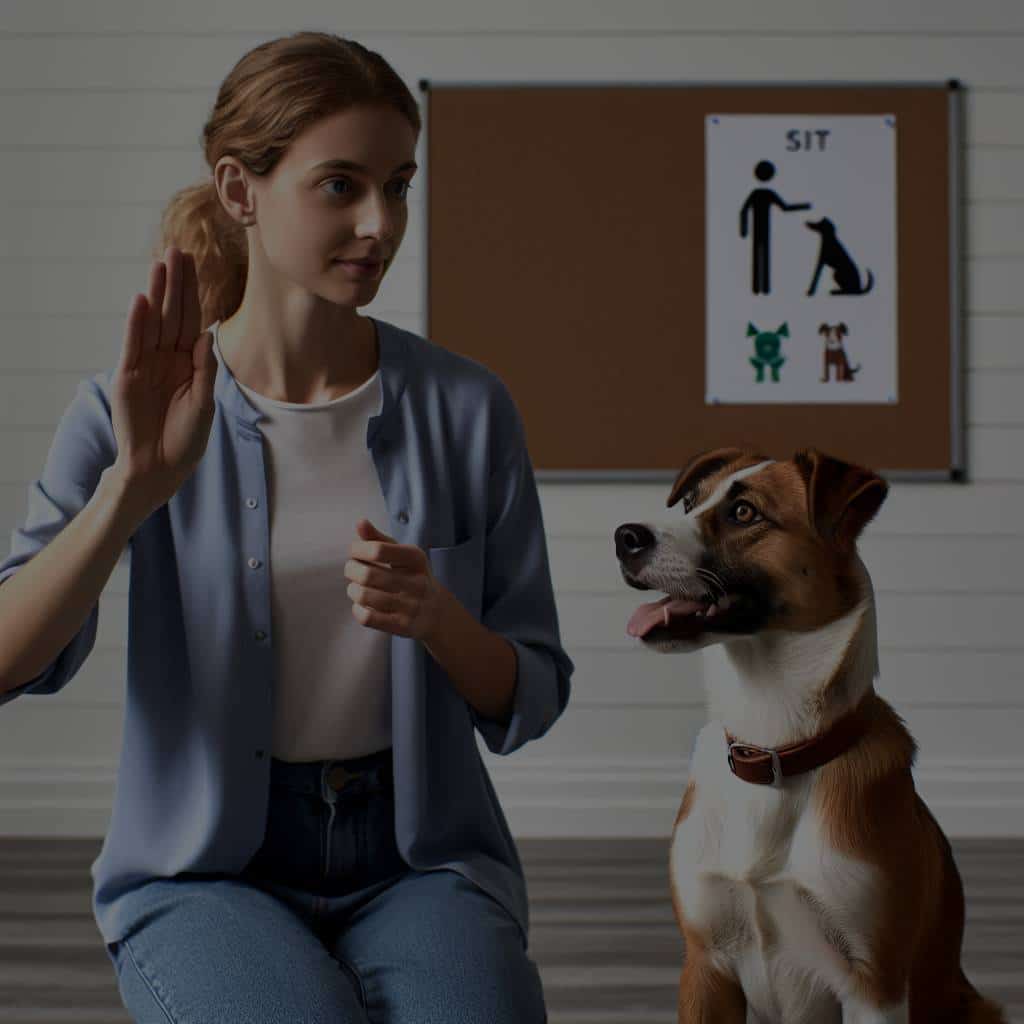What’s the Best Way to Teach a Dog Hand Signals for Basic Commands?

Dogs are exceptional creatures, filled with loyalty, curiosity, and an uncanny ability to pick up on human emotions. That’s why teaching them hand signals for basic commands is not only a fun way to interact with your furry friend, but it can also strengthen your bond. Instead of just relying on verbal commands, using hand signals can provide a visual cue to your dog. It’s a method that adds another layer to your communication with your pet, and it’s useful in noisy environments or for dogs who may have hearing impairments.
Why Use Hand Signals in Dog Training?
The use of hand signals in dog training is an innovative approach that utilizes your dog’s innate ability to read body language. Dogs interact with their world primarily through smell and sight. When we speak to them, they often pay more attention to our facial expressions, body language, and hand gestures rather than the actual words we’re saying. This is where hand signals come in handy.
A lire également : The benefits of probiotics in poultry health
Hand signals are a visual way to communicate with your dog. They’re clear, direct, and can be seen from a distance. Plus, they can also be beneficial for older dogs who may start losing their hearing.
Training your dog to respond to hand signals is not hugely different from teaching them verbal commands. It’s all about consistency, repetition, and positive reinforcement.
A découvrir également : How to Select the Right Breed of Rabbit for a Family with Allergy Sufferers?
The Basic Hand Signals to Teach Your Dog
Training your dog to understand hand signals starts with basic commands. These commands include "sit", "stay", "come", "down", and "stand". By teaching these commands, you’re giving your dog a solid foundation to learn more complex commands later on.
Teaching the ‘Sit’ Command
Teaching your dog the ‘sit’ command using a hand signal is relatively straightforward. Start by holding a treat in your closed palm and let your dog sniff it. Raise your hand above your dog’s head, towards their tail. As their head goes up to follow the treat, their bottom will naturally go down into a sitting position. When your dog is sitting, give them the treat, and praise them. Repeat this sequence consistently until your dog starts to sit when they see your hand movement.
Teaching the ‘Stay’ Command
Training your dog to recognize the ‘stay’ command involves a flat palm facing your dog, much like a stop sign. With your dog in a sitting or standing position, show them the palm of your hand and say "stay". If your dog remains in position, reward them with a treat and positive praise. If they move, calmly direct them back to the original position and start over.
How to Successfully Implement Hand Signal Training
Successfully implementing hand signal training requires patience, consistency, and the use of positive reinforcement. Start by teaching one signal at a time. Once your dog has mastered one command, move on to the next.
Be consistent with the hand signals you use. If you start with a specific hand signal for a command, stick with it. Switching signals can confuse your dog and slow down the training process.
Positive reinforcement is crucial in any form of training. When your dog correctly responds to a command, reward them with a treat, petting, or praise. This will encourage them to repeat the behavior in the future.
Teaching Hand Signals to Dogs with Hearing Impairments
Teaching hand signals is particularly beneficial for dogs with hearing impairments. For these dogs, visual cues are more effective than verbal commands. Start with basic commands, just like you would with any other dog. Use large, clear hand signals, and always reward your dog’s success with a treat or toy.
Keep in mind that training a dog with a hearing impairment may require extra patience, but it’s not impossible. In fact, dogs with hearing impairments are just as capable of understanding and responding to hand signals as any other dog.
Learning More Complex Commands
Once your dog has mastered basic commands, you can start teaching them more complex commands using hand signals. These could include "roll over", "fetch", or "quiet". The process is the same: choose a specific hand signal for the command, use it consistently, and reward your dog for correctly responding to the command.
Remember, training your dog to respond to hand signals isn’t an overnight process. It takes time and patience. However, the rewards are well worth the effort. Not only does this form of training enhance your bond with your pet, but it also provides them with mental stimulation, which can help prevent behavioral problems down the line.
Using Hand Signals for Daily Communication
Implementing hand signals into daily communication with your dog can be a fulfilling and beneficial experience. Once your dog understands the basics, you can start using hand signals to communicate your expectations more effectively.
For instance, you can use a hand signal to ask your dog to wait at the door instead of rushing through, or stay silent when guests arrive. It can also be helpful in situations wherein verbal communication may not be preferable, such as late at night or in quiet locations.
The key is to be consistent. Every time you use a hand signal, ensure it’s the same one for that specific command. And always remember to pair it with the verbal command initially until your dog can respond to the signal independently.
In daily communication, a single hand gesture can mean a lot. For example, you can use your palm facing down to signal ‘down’, or a raised hand to signal ‘stop’. Your dog will start associating these gestures with their corresponding actions over time.
In addition, you can create your own set of signals suited to your dog’s understanding. Just remember to keep these signals distinct and clear to avoid confusion. Dogs are incredibly perceptive and can pick up subtle cues, so these signals can be as simple or as complex as you want them to be.
Conclusion: The Benefits of Hand Signal Training
Teaching your dog hand signals for basic commands not only enhances communication between you and your pet, but it also adds an extra layer of safety. With clear hand signals, you can control your dog effectively in different scenarios, such as preventing them from running into a busy street or calming them down in tense situations.
Training your dog to recognize and respond to hand signals also contributes to your dog’s mental stimulation. It keeps their brain active and engaged, which can lead to better behavior overall. Moreover, it strengthens your bond with your pet by boosting their trust in you and their eagerness to interact.
In conclusion, hand signal training is a valuable tool in dog training that benefits both the pet and the owner. It might require patience and consistency, but the rewards it offers are well worth it. As your dog masters the art of reading your body language, you’ll find a new level of understanding and communication opening up between you two, making your relationship even stronger.
